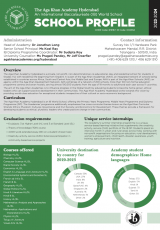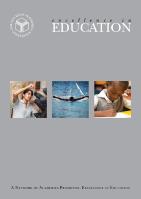Fridays For Future: Standing up for the Planet


 On Friday the 24th May approximately 60 students and six faculty from the Academy participated in demonstrations against government inaction towards the climate crisis as part of the global Fridays for Future movement. It was incredible to see the amount of energy and passion the students brought to the gathering, which included hundreds of students from other schools in Hyderabad. They performed their street play on the recent Hasdeo Arand forest clearance controversy on an actual street and received plenty of praise as well as offers to conduct theatre workshops at other schools!
On Friday the 24th May approximately 60 students and six faculty from the Academy participated in demonstrations against government inaction towards the climate crisis as part of the global Fridays for Future movement. It was incredible to see the amount of energy and passion the students brought to the gathering, which included hundreds of students from other schools in Hyderabad. They performed their street play on the recent Hasdeo Arand forest clearance controversy on an actual street and received plenty of praise as well as offers to conduct theatre workshops at other schools!
The climate demonstration was organized by independent volunteers and Academy staff who are concerned with the shallow political understanding of environmental development. The global movement demands that governments declare a climate emergency and implement comprehensive awareness campaigns about the issue; however, demands have been localized to question current development plans in place here in Hyderabad including the revision of the Strategic Road Development Plan to focus on improving mass transit systems, 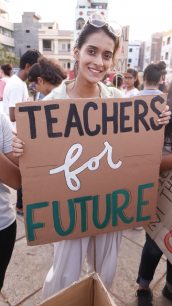 prevention of deforestation and rock explosions for the sake of highway and road expansion.
prevention of deforestation and rock explosions for the sake of highway and road expansion.
Students exercised their creativity on placards made on used bits of cardboard and chart paper. "Respect Existence or Expect Resistance", "What I Stand For is What I Stand on", “Denial is not a Policy": these were some of the phrases present on placards and used for sloganeering.
Discussions on climate change, its repercussions and the validity of evidence have been taking place in Senior School classrooms for a while now. Grade 9's current Humanities unit, titled "What's Up With the Weather (and Climate)?" has led students through a progression of understanding about global warming and the climate crisis.
To get students hooked on the unit, we began with a simple source evaluation of Donald Trump's infamous tweets denying global warming to get students to understand the difference 

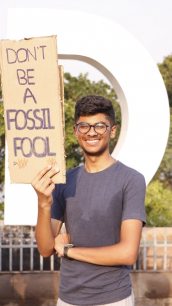 between weather and climate. We then looked at sources and sinks of carbon dioxide to better understand how human activity has contributed to global temperature increase and examined ice core data along with other physical data sets to understand the implications of climate change on the physical world.
between weather and climate. We then looked at sources and sinks of carbon dioxide to better understand how human activity has contributed to global temperature increase and examined ice core data along with other physical data sets to understand the implications of climate change on the physical world.
It was at this point when I realized that I wasn't equipped with the scientific parlance to answer many of the questions my students had, especially when we began to deal with the counterarguments for global warming. I then decided to collaborate with Ms. Arzoo for a simple lab experiment.
In the lab, students were asked to observe and record water levels as the two different beakers of ice -- sea ice and land ice -- melted under Hyderabad's scorching summer sun. We then discussed the similarities and differences between the two conditions and the scientific principles behind the phenomena.
“Students really got thinking about the observations they made and wanted to extend their learning about the same in different weather conditions and temperatures,” shared Ms. Arzoo afterwards. “It was a wonderful opportunity to tickle critical thinking skills and attitudes towards the nature of science.”
Interdisciplinary learning is a cornerstone of the MYP and the end-of-term often provides the perfect opportunities for teachers to collaborate informally across departments. In the Humanities, we have opted to teach a macro-history approach that seeks out long-term trends in the history of our world as we know it; we understand the evolution of theories based on the ways of knowing (academic disciplines) that contribute towards their development. Scientific evidence is tangible, observable phenomena that we historians use to better understand the world around us; it is imperative that we have the skills to evaluate the credibility of this data.
Written by Himani Sood, MYP Humanities faculty | Photos by Kais Vasaya & Ayman Daredia (grade 9)
Student voices



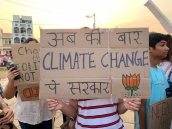 “We are here to raise our voices against pollution and the environment. This may not be a big strike. But when we come to protest here, the media will highlight it. More people will join in and finally, the governments will be forced to notice and take action,” said Eliseo (MYP4).
“We are here to raise our voices against pollution and the environment. This may not be a big strike. But when we come to protest here, the media will highlight it. More people will join in and finally, the governments will be forced to notice and take action,” said Eliseo (MYP4).
"Climate change is not something you just learn about in school and forget about as soon as you leave the room. Our exams ended today, and we are striking to put in action what we have learned. Climate change is not some abstract concept anymore; it's taking lives. It's destroying ecological diversity and we are responsible for it. So it's high time to start cleaning up our mess." Harshita Devavarapu (MYP5).
"I am scared. Scared of being homeless, scared of dying, scared of becoming a climate refugee. My country Bangladesh will drown, because of who? The ignorant leaders of our countries. Not just me but millions will be homeless all because of their denial. It's been decades and all the government has done is ignore the issue." Zoya Virani (MYP4)
"On my way here, I saw multiple places flooded with plastic which is very disappointing to me. To overcome that disappointment, I'm here to be a part of the global students strike for climate inaction, which asks our leaders to declare a climate urgency - something we need in India because old forests are being cut down for the sake of economic development. This is my first physical action towards the issue and I hope to continue doing the same. Rumi said "it is the rain which grows flowers, not thunder" hence raise 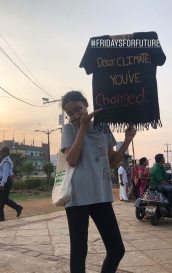 your words, not your voice!" Aksha Hemnani (MYP4).
your words, not your voice!" Aksha Hemnani (MYP4).
"We want you to panic," said Greta and here are demanding climate justice. Most of our actions directly impact the environment and it is important for us to understand just how urgent this issue is. The government is sleeping, but we aren't." Soha Jiwani (MYP4)
"My future is no longer in my hands. Climate change is the biggest threat facing humanity and I know that if nothing is going to be done about it, I will not be able to face my children." Mahek Charania (MYP4)



